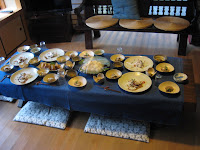 I read Shuhei Fujisawa 'Koken' (Shinchosha.)
I read Shuhei Fujisawa 'Koken' (Shinchosha.)It is the sequel of 'Yojinbo Jitsugetsusho.'
He went to Edo again for undercover mission.
Matahachiro beated the wanted person and his fated rival, Shizuma Otomi at Edo.
After fulfilling his duty, he returned home.
The shumeigiku begins to open up.





























